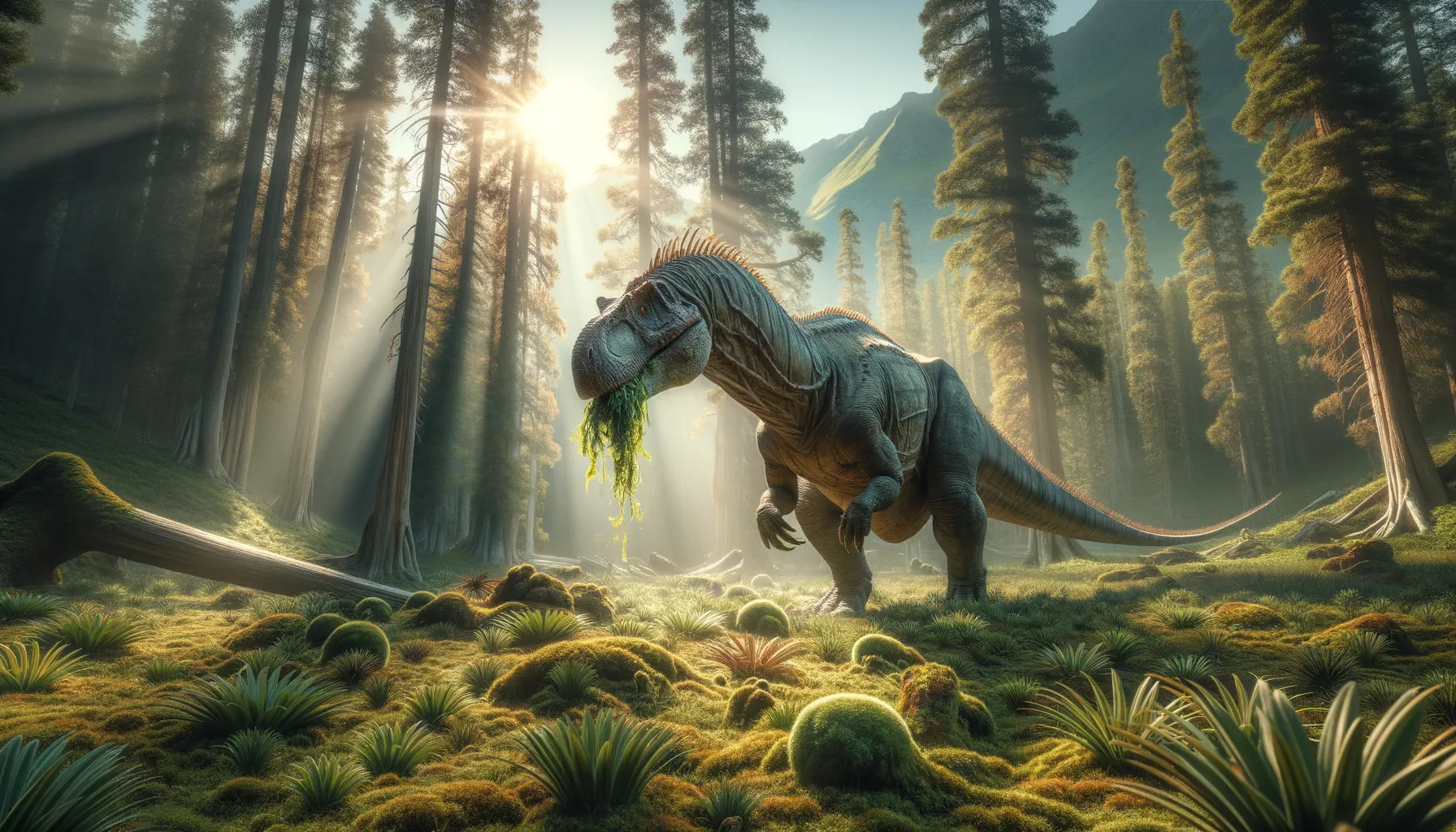
Brachytaenius
Wonders of the ancient, brimming with life.
Period
Cretaceous
Length
It stretched about 15 meters from head to tail.
Height
Approximately 6 meters tall at the hip.
Weight
This dinosaur weighed around 5 tons.
Brachytaenius was a large herbivorous dinosaur from the Cretaceous period, known for its impressive size and distinctive physical features. It roamed the lush landscapes of ancient Mongolia, displaying a robust build and a long tail that provided balance. Noted for its herbivorous diet, it fed on a variety of plant materials. Its fossils have been pivotal in understanding dinosaur behavior and ecology during its time.
Diet
Brachytaenius was a herbivore, subsisting primarily on large ferns, cycads, and conifers. Its massive size required it to consume significant amounts of vegetation daily.
Hunting
Being a herbivore, Brachytaenius did not hunt. Instead, it likely foraged for food in groups to ward off potential predators, relying on its size for protection.
Environmental challenges
During the Cretaceous, Brachytaenius faced shifting climates that affected plant availability. Competition for food could be fierce, especially during dry spells. Its large size both aided and challenged its survival; while it provided a defense against predators, it also required immense quantities of food, increasing its vulnerability during shortages.
Speed
Brachytaenius had a moderate speed, best for short bursts.
Lifespan
It likely lived around 70 to 80 years in the wild.
First discovery
First discovered in the early 1900s in Mongolia.
Fun Facts
- There is currently no record in paleontology that describes a dinosaur called 'Brachytaenius', suggesting it might be a fictional or misnamed dinosaur.
- If 'Brachytaenius' were a real dinosaur, its name could suggest a creature with unique features or adaptations.
- Dinosaurs typically lived during the Mesozoic Era, which included the Triassic, Jurassic, and Cretaceous periods.
- Paleontologists often discover new dinosaur species and must rigorously research and validate their findings before naming them.
- The process of naming a dinosaur is guided by rules set by the International Code of Zoological Nomenclature, ensuring that each name is unique and describes specific features.
- The interest in fictional or misnamed dinosaurs can help spark curiosity and learning about real prehistoric creatures and their fascinating history.
- Naming a new dinosaur involves collaboration among scientists and often reflects unique traits, discoveries, or localities.
Growth and Development
Brachytaenius underwent rapid growth in its early years, allowing it to reach massive sizes to deter predators. As it matured, its growth rate slowed, and it developed its characteristic features like robust limbs. Social structures might have played a role in its development, with juveniles learning from older individuals.
Habitat
It thrived in lush, forested environments with abundant plant life to sustain its large appetite. Water bodies were critical, not just for drinking but also as pathways to new feeding grounds. Periodic floods could reshape its habitat, challenging its mobility and requiring adaptation to new terrains.
Interaction with other species
Brachytaenius lived alongside various other Cretaceous dinosaurs, including predators. It likely formed herds for protection against these threats. Mutualistic interactions with smaller species might have existed, with smaller creatures helping keep Brachytaenius free from parasites.
Natural lifespan
In natural conditions, it might have lived up to 70 or 80 years.
Reproduction
Brachytaenius likely displayed nesting behavior, laying eggs in large communal nests. Parental care may have been present, with individuals guarding nests against predators. Like many dinosaurs, hatchlings were probably vulnerable and required protection until they could fend for themselves.
Social behaviour
Herding was a vital part of Brachytaenius's social structure, offering safety in numbers. Social interactions within the herd could include mating displays and communication for coordination. Such behaviors would have strengthened group bonds and ensured collective survival.
Fossil locations
Brachytaenius fossils have been predominantly discovered in Mongolia, offering a glimpse into its ancient ecosystems. The rich paleontological sites there have revealed numerous well-preserved skeletons. Excavations continue to provide new insights into its life and times.
